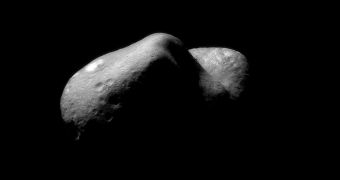An international collaboration of experts, led by NASA scientists, found that numerous asteroids the size of the one believed to have killed the dinosaurs struck our planet between 3.8 to 1.8 billion years ago. This number was found to be a lot higher than initially calculated, the new study reveals.
Dinosaurs went extinct some 65.5 million years ago, during the Cretaceous-Paleogene (K-T) extinction event. It is now widely accepted that a large asteroid impacted the planet at that time, triggering surface and atmospheric phenomena and processes to which the giant lizards could not adapt.
The new study indicates that as many as 70 space rocks at least the size of the K-T impactor struck Earth between 3.8 and 1.8 billion years ago. Around 4 such objects impacted the Moon during the same time frame, the team reveals.
This conclusion was reached after investigators studied ancient rocks collected from Australia. The samples contained spherules, which are debris of nearly spherical, sand-sized inclusions occurring in thin layers of rock. These results were then augmented using a series of computer models.
Spherules are believed to develop when an impactor strikes the surface of a planet. The event ejects molten rock droplets high in the atmosphere, where they become solid. As they rain back to the surface, they are deposited in thin layers, revealing the time of the impact, as well as other characteristics.
“This work demonstrates the power of combining sophisticated computer models with physical evidence from the past, further opening an important window to Earth's history,” scientist Yvonne Pendleton explains.
She holds an appointment as the director of the NASA Lunar Science Institute (NLSI), which is based at the American space agency's Ames Research Center (ARC), in Moffett Field, California. Details of the new investigation were published in the April 25 online issue of the top scientific journal Nature.
“The [spherule] beds speak to an intense period of bombardment of Earth. Their source long has been a mystery,” adds the principal investigator of the impact study team, William Bottke. He holds an appointment with the Boulder, Colorado-based Southwest Research Institute (SwRI).
Experts from the Purdue University in Indiana, the Charles University in Prague, the Czech Republic, Observatoire de la Cote d'Azur in Nice, France; and Academia Sinica in Taipei, Taiwan, were also a part of the research team.

 14 DAY TRIAL //
14 DAY TRIAL //